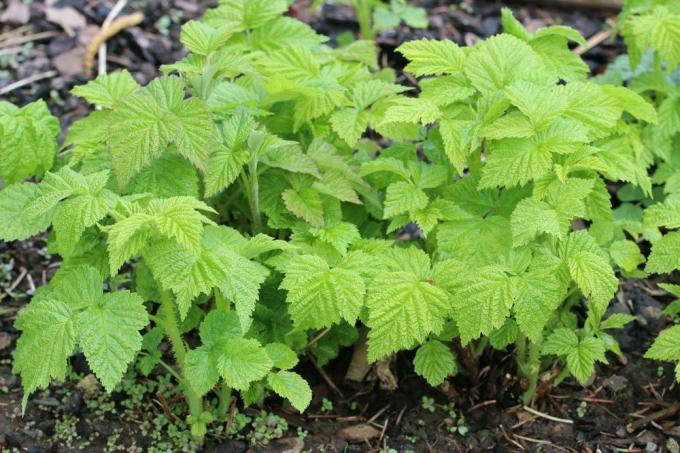
table of contents
- Understand growth
- Favorable growth problems
- The right location
- Prepare the soil
- planting
Raspberries are among the most popular types of fruit that are grown in private gardens. They taste aromatic and can be used in many ways. For a rich harvest, however, you should choose the location and subsoil carefully.
Understand growth
Rubus idaeus is a forest pioneer who prefers to grow in clearings and on the edges of forests. The species develops fine roots that run through the upper raw humus layer. A thick main root conquers deeper soil layers. It becomes as thick as a pencil and follows earthworm holes or cavities in previously rotted tree roots up to a meter deep. Therefore raspberries are not flat-rooted.

Favorable growth problems
Cavities, through which the roots of the raspberry plant grow, ensure the drainage of water from the upper soil layers. When there is sudden heavy rainfall, the cavities fill with water. Due to the lack of solar radiation, water can no longer evaporate from the soil. The roots of the raspberry no longer get enough air and are too wet. The contrast to a summer that is too wet, however, is extreme and prolonged periods of drought that bring the water balance in the plant to a standstill. In the past few years, it has been shown in many places during such summer months that the site conditions are not ideal. Various symptoms appear:
- Growth of young rods stagnates
- older leaves tend to have yellow and brown leaf margins and dry up
- Fruits stay small and do not fully ripen or turn milky white
- silvery-brown spots on the tail
- Resilience dwindles, so that more weak parasites appear
The right location
From an economic point of view alone, it is worth looking for the perfect location. Raspberries are one of the most expensive berry fruits in stores that cannot be stored for a particularly long time. Even small amounts of harvest can be processed in a variety of ways. This makes the shrubs perfect plants for the domestic kitchen garden. If you pay attention to the following subtleties, you will ensure optimal site conditions:

- The lowest point in the garden is unsuitable as this is where the water collects
- slight air movements prevent botrytis rot
- A sheltered place prevents wind breakage in particularly tall species
- a few hours of sunshine in the morning and evening ensure optimal fruit ripeness
- Protection from the midday sun prevents sunburn
Prepare the soil
In an optimal location in the home garden, the raspberry can produce juicy fruits for between twelve and 15 years if properly cared for. A prerequisite for healthy and long-term growth is an optimal subsurface, because raspberries have very special requirements. To avoid growth problems and associated collapse, you should choose and prepare the soil well:
- A humus rich and deep soil is ideal
- Dig deep to explore the watercourse
- Break through compacted soils and loosen them with sand
- loose rock ensures improved water drainage
Note: Heavy clay or loam soils are not ideal. In the short term, these substrates provide high yields, but the plant cannot expand its deep roots in the long term.

planting
Frequent mistakes happen with the Inserting the raspberries. If the raspberry shrub does not grow well in spite of optimal conditions in the location, you have probably planted it too deep. The root ball should only be set so deep into the earth that there is no more than two centimeters between the top root and the surface of the earth. To prevent evaporation from the root area, cover the soil with mulch material such as straw or compost.
Tip: Avoid using compacted materials such as cuttings or leaves when mulching, as they prevent the soil from being aerated.



